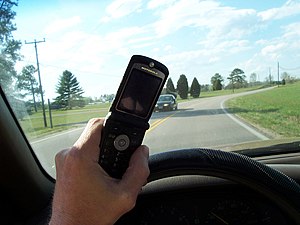“Don’t text and drive!” Your parents say it, your teachers say it, the billboards say it, and even some of your friends say it. But you still do it. I’d ask why, but there’s really no logical explanation for it. I’d be lying if I told you I didn’t occasionally participate in texting and driving, even though I know it’s dangerous. It’s not a good idea—for any of us. Nothing is so important it can’t wait until you can pull over or until you reach your destination. The fines alone for texting and driving should be enough of a deterrent, right?!
U.S. government research shows “more teen drivers are buckling up and not driving drunk than in years past,” but texting and driving is “posing a new threat.” In fact, according to a research team from the U.S. Centers for Disease Control (CDC), “One in three high school students said they had texted or emailed while driving during the past month.” While the decline in drunk driving incidents and the increase in buckle-ups is wonderful news, the texting issue is a deadly problem.
Texting is the primary means of communication for teens: Teens typically send upwards of 100 texts a day. I’ve seen teenagers text each other in the same room! It’s clear that there’s a whole world of communication happening via technology, some good, and in the case of texting and driving, some deadly. According to Amanda Lenhart, a senior researcher at the Pew Research Center in Washington, “A lot of teens say ‘Well, if the car’s not moving and I’m at a stoplight or I’m stuck in traffic, that’s OK.'” Lenhart goes on to say, “Other teens acknowledge they know it’s not safe, but think it is safer if they hold the phone up so they can see the road and text at the same time.” Neither one of these practices is safe.
It’s hopeful that this current generation of teens is exhibiting safer driving behaviors. There are less incidents of drunk driving (from 17% in 1997 to 8% in 2011) and a 44% drop in car crashes amongst teens. This says a lot about kids making healthier choices. I’m hoping to see a positive shift in the choice to text and drive. This is a fad that really needs a short shelf-life.









